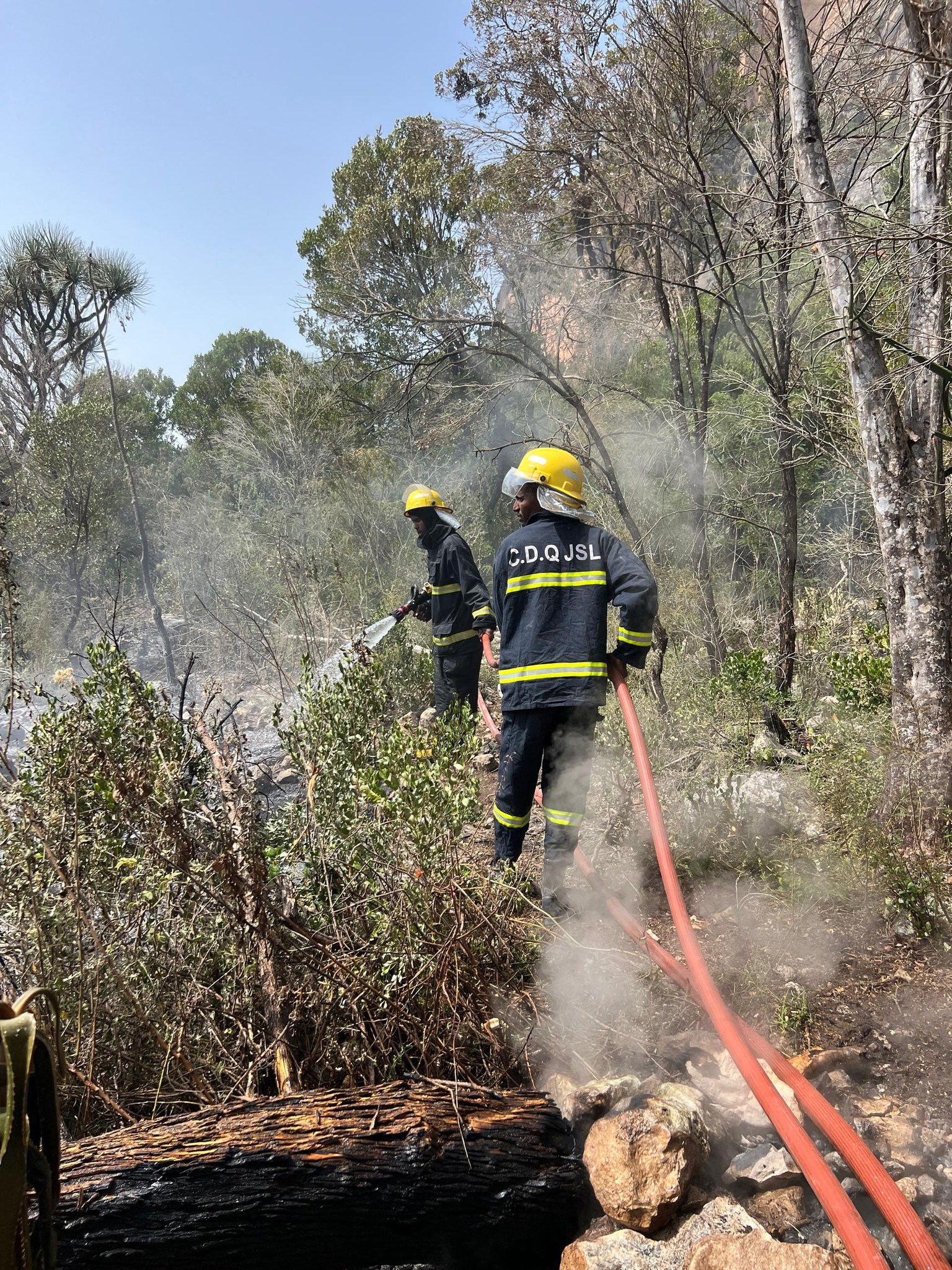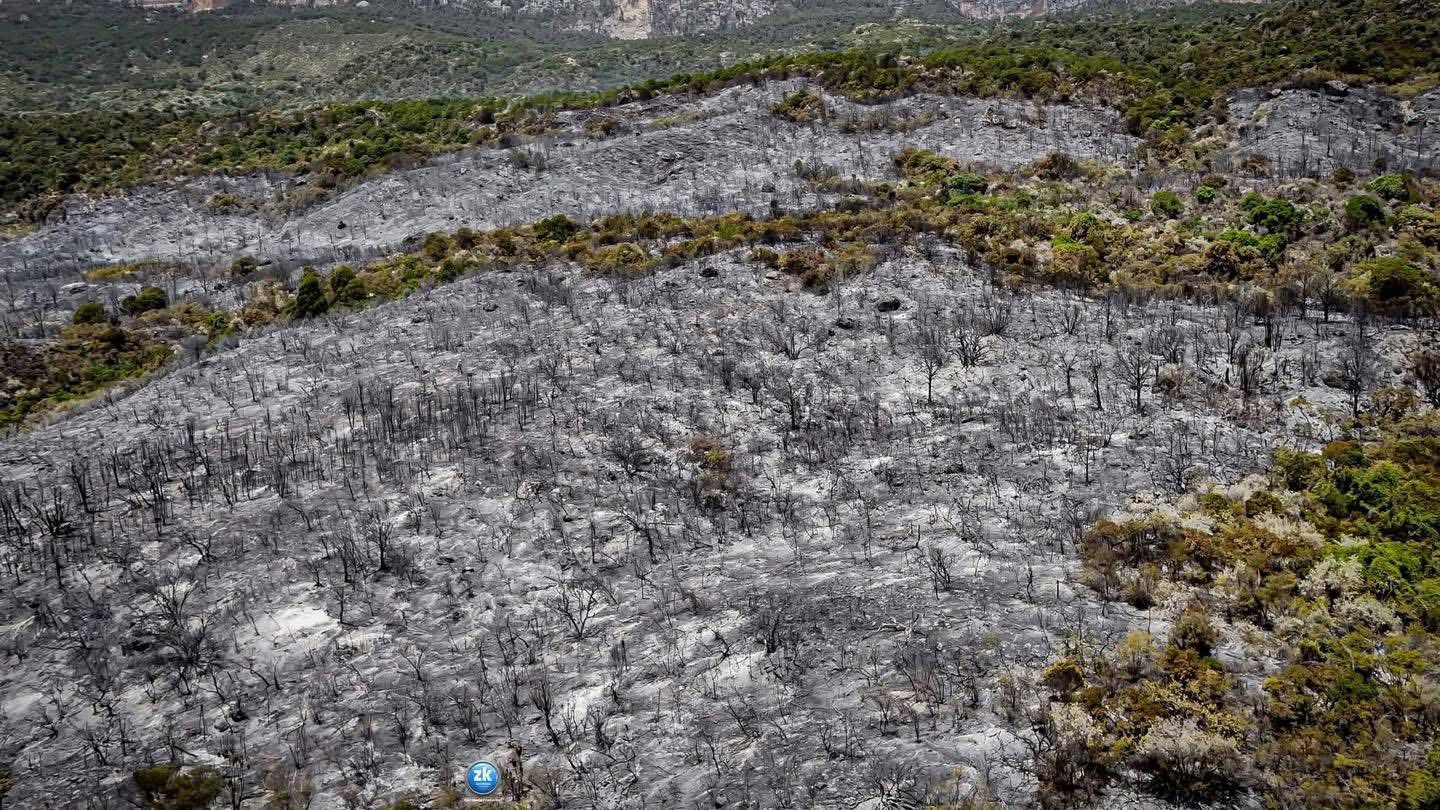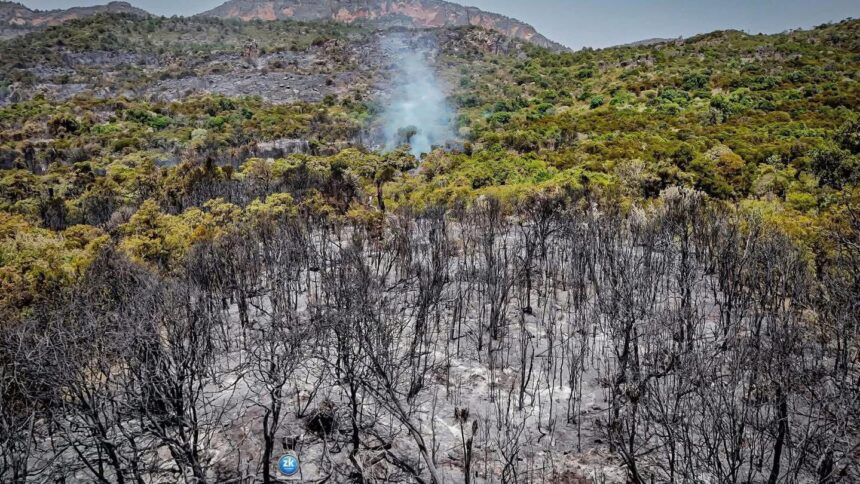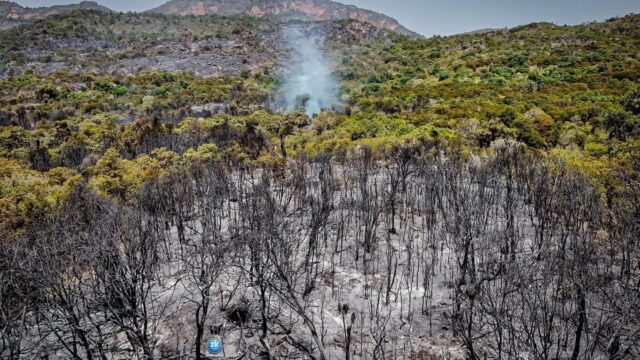Garowe–(Puntland Mirror) Local residents spent nearly 24 hours battling a wildfire that broke out in the mountainous Daalo area of Sanaag region at the end of June 2025.
The fire destroyed a large number of farms in the area, according to Somaliland’s Minister of Environment and Climate Change, Abdullahi Jama Osman.
The most affected area was Haleera, a farming zone located on the lower slopes of the mountain. This region is among the most forested areas in Somalia.
This is not the first time a fire has erupted in the area. A similar blaze occurred in July 2022 during the summer season, causing significant damage.
Lack of firefighting capacity
Residents struggled with the fire for more than two days without access to the proper firefighting tools and resources, such as aircraft or trained wildfire personnel.

Somaliland authorities deployed municipal fire trucks—normally used in urban settings—to the remote area, and after significant efforts and risk to life, the fire was eventually brought under control.
Forest fires are a relatively new phenomenon in Somalia, and the country lacks the preparedness and infrastructure to respond to wildfires in forested areas.
Officials from the Ministry of Environment and Climate Change in Somaliland estimated that the fire covered an area of approximately 8 to 9 kilometers. The affected terrain was difficult to access, especially for fire trucks, due to the lack of roads, which severely hampered emergency response efforts.
The Minister admitted that tackling such wildfires is beyond their current capacity.
Impact and damage
Several people who took part in the response effort sustained minor injuries, according to ministry officials. The injured are receiving medical treatment at a hospital in the nearby town of Erigavo, about 15 kilometers from the affected area.

Since much of the scorched land included farmland, the full extent of agricultural damage has yet to be assessed.
The fire also likely impacted local wildlife, including birds and slow-moving species such as snakes, which inhabit the area. However, due to limited attention to wildlife protection in Somalia, the scale of the ecological damage remains unknown. Some of these species may be endangered.
What caused the fire?
Somaliland’s Ministry of Environment and Climate Change said the exact cause of the fire is still under investigation, but they believe climate change may be a contributing factor.
Climate experts suggest that rising global temperatures are causing summer heatwaves that dry out vegetation, making it more prone to ignition through friction and other natural causes.
The Intergovernmental Panel on Climate Change (IPCC) has reported that forest fires are directly linked to climate change. Rising temperatures, increased droughts, and strong winds all heighten wildfire risks. These fires release vast amounts of carbon dioxide (CO₂) into the atmosphere, further accelerating climate change in a dangerous feedback loop. The IPCC warns that forest fires are expected to become more frequent and intense if global warming reaches or exceeds 1.5°C.






